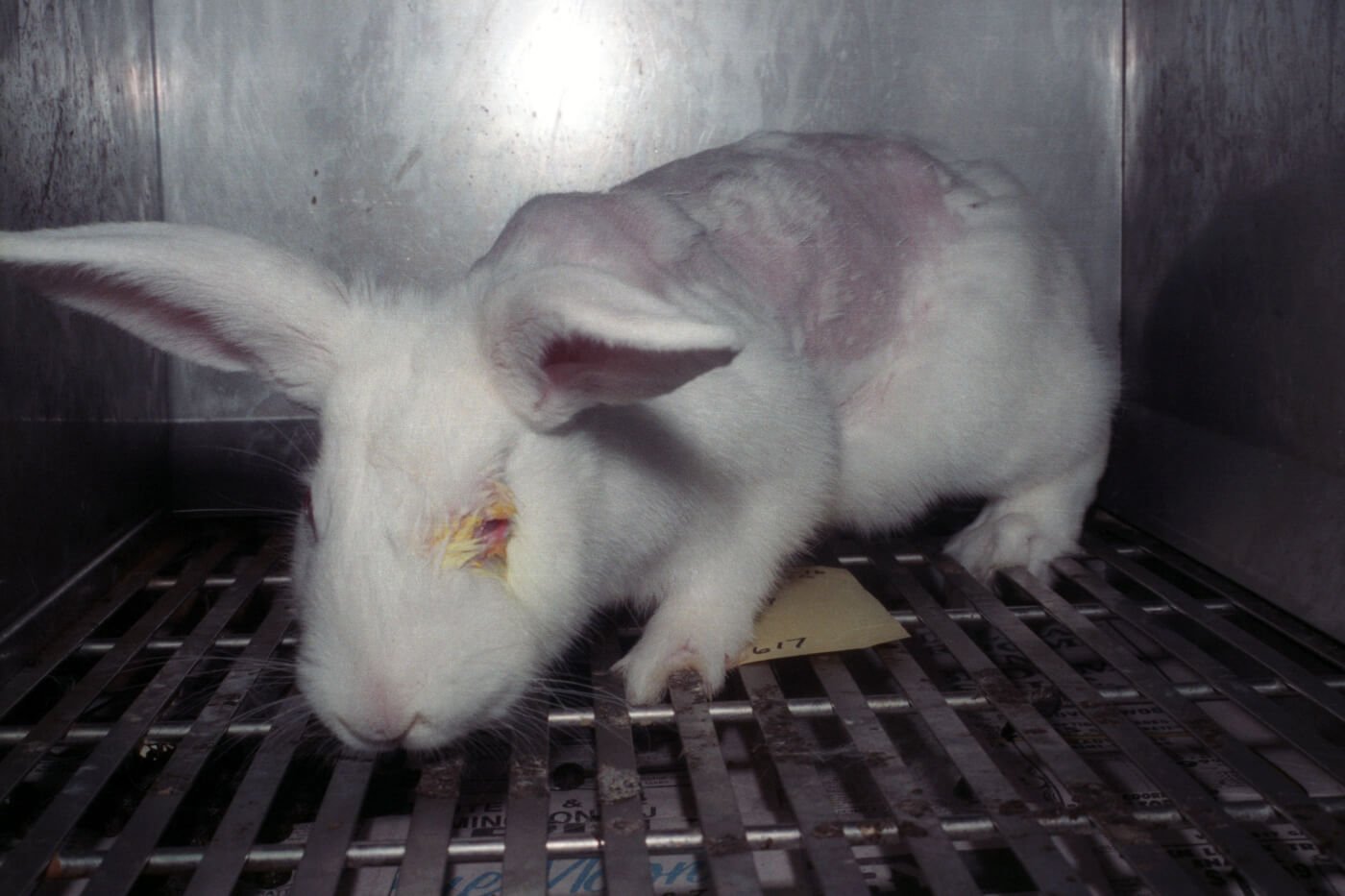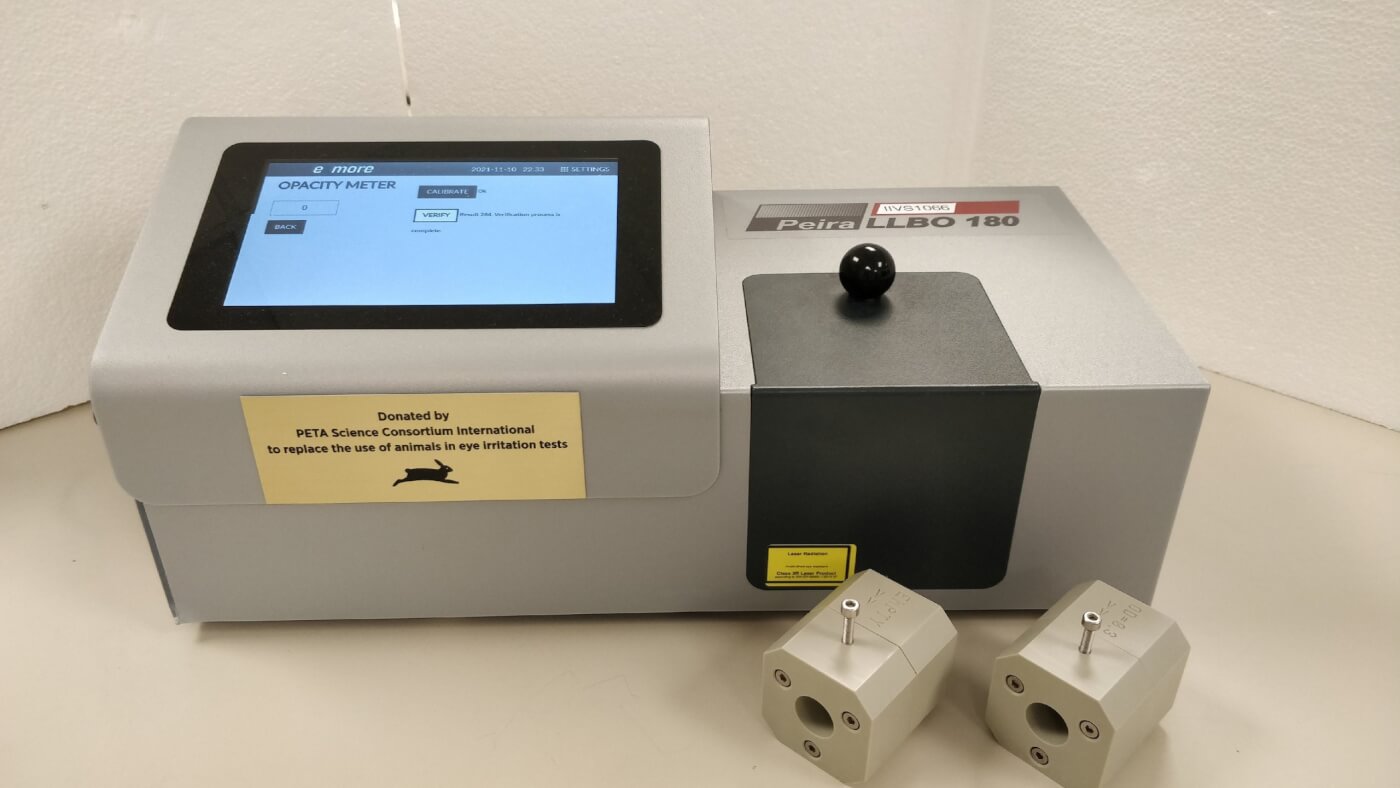A Leap Forward: EPA Encourages Companies to Use Non-Animal Eye Tests
It’s time to hop for happiness when it comes to progress for rabbits used in testing. The U.S. Environmental Protection Agency’s (EPA) Office of Pollution Prevention and Toxics (OPPT) has clarified its position on how companies should—and how the agency will—determine industrial chemicals’ potential to irritate the eyes.
The EPA’s new document encourages companies to submit data from non-animal methods that use human cells and have the potential to protect humans better, rather than using results from the painful and unreliable Draize test that uses live rabbits.

In the Draize test, which was developed in the 1940s, chemicals are applied to rabbits’ eyes and left for 24 hours or more, causing pain, swelling, hemorrhaging, or even blindness. The rabbits are usually killed after suffering in these notoriously undependable tests.
The EPA’s document is a win-win: It better protects humans from hazardous chemicals, and it prevents rabbits from being used in toxicity tests for industrial chemicals.
The new framework was described in a poster coauthored by PETA scientists, EPA officials, and others and presented at the 62nd Annual Society of Toxicology conference in Nashville, Tennessee.
PETA scientists have been working for years with government institutions, including the EPA, and private industries to replace the rabbit-eye test with more reliable non-animal methods.
In 2023, PETA scientists coauthored a paper with the EPA and other collaborators showing methods that can replace the use of live rabbits to test the effects of pesticides on human eyes. The evidence presented in this paper could be used by the EPA to officially allow companies to assess pesticides without using live rabbits.
In 2021, PETA scientists published a groundbreaking, award-winning paper with the EPA and other collaborators showing that tests that don’t use rabbits are more consistent than the Draize rabbit test and equally or more reflective of human responses.
To encourage the uptake of superior non-animal testing methods in place of rabbits, PETA Science Consortium International e.V. also donated a $20,000 laser-light beam opacitometer to a research organization that exclusively develops and conducts non-animal tests. This piece of equipment is helping to replace the use of live rabbits in eye tests.

Beyond Eye Testing
Over the past few years, the EPA has continued to make progress in adopting methods that both reduce the number of tests on animals and allow it to make better-informed decisions regarding the potential risks of chemical exposure to humans.
In 2019, the EPA released a Work Plan (which was updated in 2021) outlining concrete steps it would take to reduce toxicity testing on animals and prioritize non-animal testing methods. The same year, the agency also began hosting its own biennial conference entirely devoted to non-animal methods.
The EPA actively engages within the Interagency Coordinating Committee on the Validation of Alternative Methods (whose task is to promote non-animal testing methods for government-required testing) to raise awareness of new developments in the field of non-animal methods.
The agency also advances human-relevant, non-animal testing through various cross-sector partnerships, including collaborations with PETA scientists. For example, it collaborated with PETA scientists and others on a publication showing that a test in which birds are fed pesticide-laced food for days before they’re killed doesn’t help protect the environment. The EPA then used the publication to release a policy to no longer require the test, sparing hundreds of birds each year. The agency also collaborates with PETA scientists and others on a webinar series specifically designed to train regulators, industry, and the public on new non-animal testing methods and how to use them.
Other recent progress includes guidance published by the EPA proposing cruelty-free methods instead of conducting skin allergy tests on mice and a policy that will save as many as 240 fish each year from being used in certain pesticide tests.
There’s lots more, but here’s one final important example: In order to highlight opportunities to reduce and replace the use of animals in tests and to track the reduction in the number of animals used, the EPA developed a website with all of the above information in one place. We challenge the agency to continue to build on this progress!
How You Can Help Rabbits in Laboratories
Be on the side of science and refuse to buy from companies that test their products on animals:

